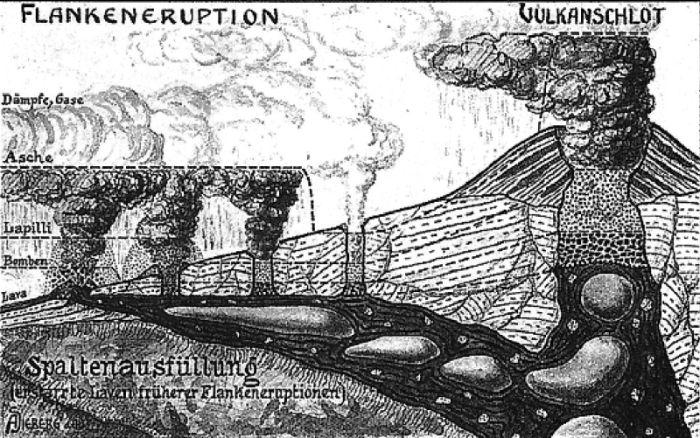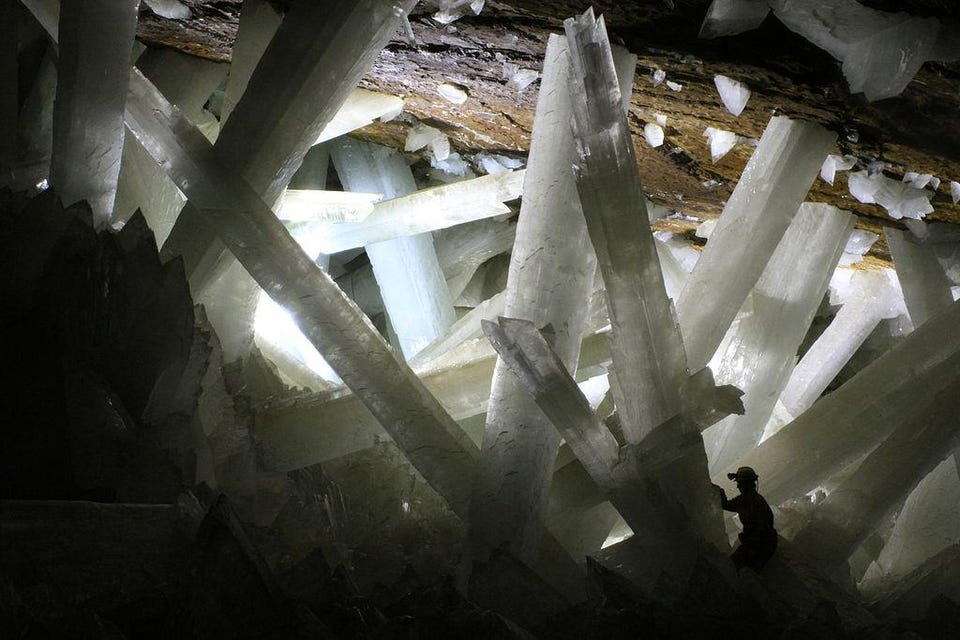“Well gentlemen, at one point at least I agree … the materials of the geologists are not charts, chalk and chatter, but the earth itself. We should never know the truth until we are able to make that journey and see for ourselves.”
from “Where Time Began,” a 1976 film based on Jules Verne’s novel Journey to the Center of the Earth.
Novelist Jules Verne was born on February 8, 1828, in the French city of Nantes. Today he is known as a pioneer of the science-fiction genre, imagining a submarine traveling twenty thousand leagues under the sea, a space projectile heading to the moon and a fantastic journey into the depths of our world. One hundred and fifty years after Verne’s visions, humans have walked on the moon, nuclear submarines can travel under the sea and we have started to explore the mysteries of the deep earth.
Journey to the Center of the Earth was published in 1864 and was immediately a critical success, and has remained in publication in both French and English to this day. In the opening chapters of the novel, the German Professor Otto Lidenbrock and his nephew Axel discover an ancient document, written by Snorri Sturluson. This (fictional) 16th-century alchemist described a journey into a large system of volcanic conduits, accessible from the crater of the Icelandic volcano Snæfellsjökull. So Lindenbrock and his nephew traveled to Iceland, employed a local guide, and following the document’s coded directions, entered the volcanic crater.
There, they descended through the sedimentary layers of the crust into its foundation. About 140 kilometers beneath the surface they discovered an underground sea occupying a cavern, roughly the size of Europe, hollowed in the granite of the lower crust. The travelers ventured upon the “Lidenbrock Sea”, as they name the newly discovered ocean, in a raft built out of the logs of “great palm-trees of species no longer existing” growing along the shores.
At sea, they witnessed a battle between Jurassic sea monsters and disembarked on an island with a geyser. Venturing inland they discovered living mastodons and primitive hominids. Verne’s bestseller was a product of rich imagination and research. He likely based his fictional travel account on the works of geologists like Alcide d’Orbigny, who classified rock strata by their fossil content, Elie de Beaumont, who worked on the origin of mountain ranges, and Charles Sainte-Claire Deville, who studied volcanoes.

An important source of inspiration to Verne were the books by the French scientist and writer Louis Figuier. In 1864 Figuier published La Terre avant le déluge, a popular science book discussing geology and paleontology. From Verne’s surviving correspondence with his publisher, we know that he started to work on his novel sometimes between January to August 1864. Some passages and scenes in Verne’s novel, like the battle between an ichthyosaur and a plesiosaur witnessed by the travelers, was likely inspired by an illustration in Figuier’s book. Verne’s imaginary forest growing along the “Lidenbrock Sea” was similar to the fossil forests of the Carboniferous period. The heat necessary to keep the forest alive comes from “the excessive heat of the globe. The Earth was still so hot in itself that its innate temperature dominated” as Figuier writes in his textbook. Before the discovery of radioactive decay, geologists believed that earth’s inner heat was the residual heat of its formation from a molten ball. Over time earth cooled down and a solid crust formed.
Verne’s explorers used the hollow volcanic conduit of Snæfellsjökull as a gateway to earth’s interior. Many geologists at the time believed that volcanic conduits, empty once the volcano erupted, connected a volcanic crater to magma chambers deep underground. Today we know that such conduits are far too small (and obstructed by solid rock) for humans to move through.
However, Verne was right when he described a chamber full of gigantic crystals found deep underground. For crystals to grow, they need the right conditions and a lot of time. In theory, there are no limits to how large a crystal can become, however, perfect conditions for crystal growth are rarely met. That said, such perfect conditions are found in the Cueva de los Cristales, located in the Naica Mine, Chihuahua, Mexico.
The mine of Naica was opened in 1828 to mine for lead, zinc and silver ore. In 1910 a natural cave was discovered, named later Cueva de las Espadas. The name derives from the three-foot long blade-like gypsum (calcium-sulfate) crystals covering the walls of the cave. However, what the miners discovered almost 90 years later, during the construction of a tunnel 0.2 mile below ground, is even more astounding. The Cueva de los Cristales hosts the most incredible crystals ever discovered, mirroring Verne’s fantastic description. Almost perfect conditions made it possible to grow gypsum crystals more than 10-meters in length and with an estimated weight of 40 to 50 tons.

Maybe Verne was right in even a more spectacular way. The largest crystal possible on earth could be indeed found at its center. Earth’s core is a solid ball of superhot iron and nickel alloy about 760 miles in diameter. Modern research suggests that it displays a crystalline structure. Unfortunately, at the moment, there is no way to be sure and visit this place as Verne imagined.
